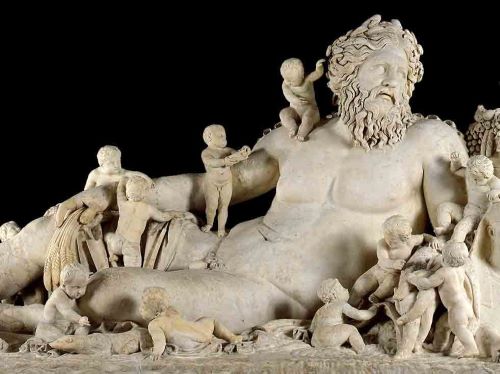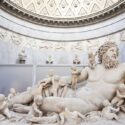Have you ever seen the statue of the Nile and its many symbols? The Statue, preserved in the Vatican Museums, is famous worldwide and is full of symbols. Do you know who those little figures are? Why there are so many in this sculpture? Want to know more? Take one of out Vatican Tours. We’ll take you through the Museums and share the secret of its masterpieces with you. Come and see the Vatican Museums and its legends with your own eyes.
The Statue’s History
Following the defeat at Waterloo (1815), the Vatican asked France for the return of the works of art that Napoleon’s troops had stolen from Rome in 1797 as spoils of war. Among these was the Nile; a colossal marble sculpture dating from the 1st century A.D. It is currently located in the Braccio Nuovo of the Vatican Museums. But it was not easy for the Papal State to regain its possession. The French government was initially unwilling to yield to Italian pressure.
The Statue
The river Nile is depicted as a bearded old man lying on his side with his head crowned with leaves and fruits of Egypt, an allusion to the fertility of the fields ensured by the water.
There are two other elements that refer to fertility: the bundle of wheat that the Nile holds in his right hand and the cornucopia full of fruit placed above the sphinx. The presence of the former is linked to the fact that wheat was the main product of Egyptian agriculture and the staple food of the ancient world.

Statue of the Nile in the Vatican Museums
The “little men”
The statue of the Nile is “studded” with sixteen putti (cherubs). They are all over the statue. They allude to the sixteen cubits of water. This is the level of the waters, reached by the Nile during the flood season.
Come and take a closer look at the Nile and its putti. Take one of out Vatican Tours. We’ll take you through the Museums and share the secret of its masterpieces. Come and see the Vatican Museums and its legends with your own eyes.

